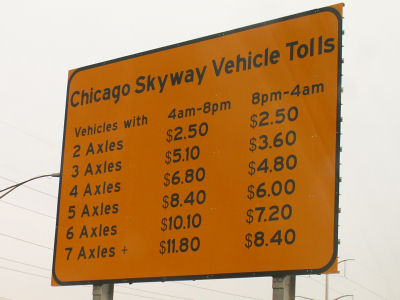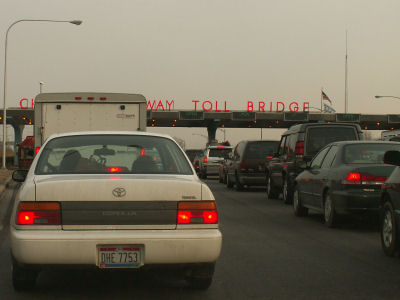People driving between downtown Chicago and northwestern Indiana have for several decades now had the option of taking the Chicago Skyway. This is a toll road built and operated by the City of Chicago, and it’s the only toll road not operated by the Illinois Toll Highway Authority. That’s a bit of a problem, because it doesn’t participate in the I-Pass electronic toll collection system: You hand your money to the people in the toll booths.
Actually, it’s not so much a toll road as a toll bridge over the Calumet river, plus a few miles of feeder ramp. The river is active with shipping, so the bridge has to rise up 125 feet. It’s a substantial structure. It’s priced that way too. For the last decade or so, Illinois tolls have been 40 cents, but the 8-mile Skyway costs 2 bucks.
It’s a shortcut in terms of driving distance, but during busy times it hasn’t always been a time saver. It gets pretty congested. A few months ago, the Skyway decided to try to improve driving times with congestion pricing, as shown here:
 |
| Skyway Congestion Pricing |
Congestion pricing is an economically sound approach to fighting highway congestion by increasing the prices during normally congested times. With enough of an increase, some drivers will choose to start their trips earlier or later, and congestion will be reduced.
It almost worked. The only problem is that the Skyway combined congestion pricing with an across-the-board price increase for cars from $2.00 to $2.50. Suddenly, thousands of cars an hour needed change at the toll booths. The result was predictable:
 |
| Skyway Congestion |
The previously efficient toll plazas started having long lines of vehicles.
It looks like it’s going to work out for the better, however. The City has responded to the congestion by doing something I’ve been wanting them to do for years. Starting June 17th, the Chicago Skyway will start accepting I-Pass transponders for electronic toll payment.
Leave a Reply